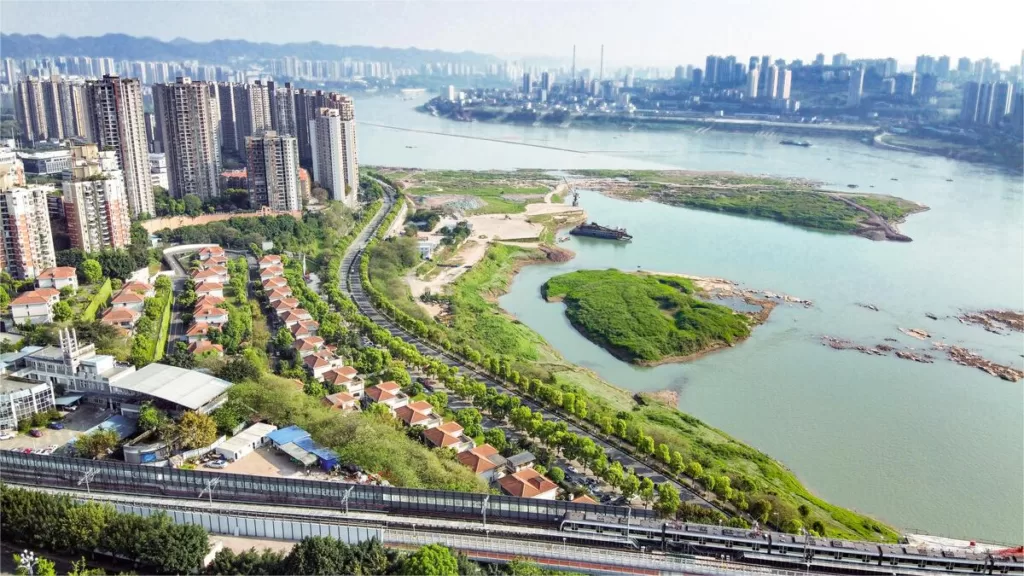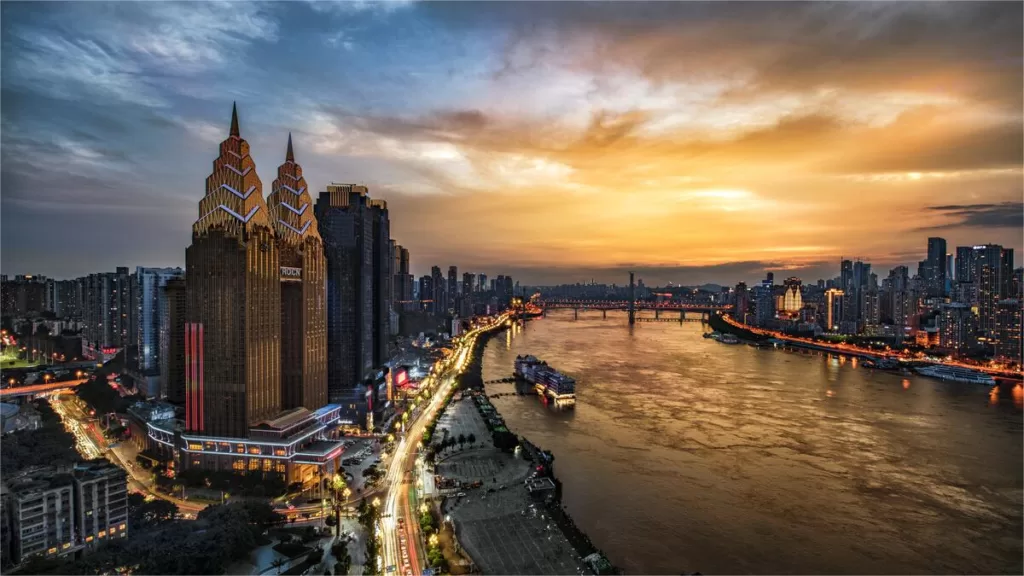Ciyun Temple Chongqing - Bilhetes, horário de funcionamento, localização e destaques


Ciyun Temple (慈云寺), located at the foot of Shizishan Mountain in the Xuantan Temple area of Nan’an District, hugs the banks of the Yangtze River. A stone-carved green lion rests on the left side of the temple gate, gazing across the river to the distant White Elephant Street on the opposite bank. Originally built during the Tang Dynasty and later renovated during the Qianlong period of the Qing Dynasty, the temple was initially dedicated to Guanyin. In 1927, with funds raised by Master Yunyan, it underwent expansion and a change of name to Ciyun Temple, becoming the only Buddhist temple in the country at that time where monks and nuns coexisted.
Ciyun Temple showcases a unique blend of Chinese and Western architectural styles, setting it apart from other Buddhist temples in China. Among its surviving structures are eighteen pavilions, the main hall, the Universal Virtue Hall, the Manjushri Hall, the Guanyin Hall, the Weituo Hall, the Thousand-Armed Guanyin Hall, and the ancient Buddha cave. Most of these buildings date back to the Tang Dynasty, with the last major renovation taking place in 1936.
The temple houses a remarkable collection of artifacts, including a jade Buddha, a Vajra canopy, a thousand Buddha robes, scriptures, and a Bodhi tree, collectively known as the “Five Wonders” of Ciyun Temple. With its rich history, architectural uniqueness, and cultural treasures, Ciyun Temple stands as a testament to the enduring legacy of Buddhism in the region.
Índice
- Informações básicas
- Localização e transporte
- Highlights of Ciyun Temple
- Vlog about Ciyun Temple
- Dicas úteis resumidas a partir de comentários
- Attractions near Ciyun Temple
Informações básicas
| Duração estimada da excursão | 1 hora |
| Preço do bilhete | Grátis |
| Horário de funcionamento | 8.00 - 17.30 |
| Número de telefone | 0086-023-62871040 |
Localização e transporte
Ciyun Temple is gracefully perched atop Shizishan (Lion Mountain) along Nanbin Road in the Nan’an District of Chongqing, China. This sacred haven is situated in close proximity to the Yangtze River, offering a serene retreat amid the bustling urban landscape.
Tourists can take bus 338, 373, 375, Tourist Line T026, Tourist Line T040, or Tourist Line T072, get off at Zishui Xiaodeng Stop (字水宵灯站), and walk about 250 meters to the north to reach the temple.
Highlights of Ciyun Temple
Buddhist Treasures
Within the sacred halls of Ciyun Temple, visitors encounter an array of meticulously crafted Buddha statues and a wealth of Buddhist relics. Notably, the temple boasts three jade Buddha statues, with the Shakyamuni Jade Buddha standing tall at 1.87 meters and weighing a substantial 1500 kilograms, ranking among the larger jade Buddhas in China. Adorning the space in front of the jade Buddha are four Vajra canopies, intricately adorned with the complete text of the Diamond Sutra, created by interweaving strands of gold thread in five different colors. The temple’s collection extends to precious embroidered Buddha hangings, a thousand Buddha robes, Vajra canopies, ancient finger paintings and inscriptions, and a complete set of early Japanese Buddhist paintings – a truly invaluable treasure trove. Ciyun Temple also houses 130 volumes of Buddhist scriptures, with the most precious being the Song Dynasty editions of the “Qisha Canon” and the “Pingqie Canon.”
Bodhi Tree Miracle
Adding to the spiritual ambiance, Ciyun Temple is graced by a Bodhi tree, transplanted from India during the early years of the Republic of China. This sacred tree endured a period of dormancy during the turbulent years of the Cultural Revolution, only to miraculously revive in 1982, coinciding with the government’s implementation of more tolerant religious policies. The rejuvenation of the Bodhi tree, witnessed by monks and pilgrims alike, became a symbol of hope and resilience. Adjacent to the tree is a sculpted lotus flower in a pond, with an image of Prince Siddhartha Gautama standing atop, surrounded by nine dragons spouting water – a depiction known as the “Nine Dragons Bathing the Prince.” This imagery is inspired by Buddhist scriptures that recount the celestial celebration of the Buddha’s birth in Lumbini, where nine dragons showered the infant Prince with purifying waters.
Panoramic Views from the Summit
Ascending to the mountain’s zenith, visitors are treated to a spectacular panorama that combines natural beauty with architectural grace. At the summit, a vast garden unfolds, complemented by intricate corridors and the picturesque “Haoyue Pavilion” offering panoramic views. The highest point reveals the ancient Lamp-Lighting Buddha Cave. Surrounded by trees and fragrant grass, the view encompasses the Yangtze River Bridge, resembling a dragon-shaped jade belt. On the opposite side, the bustling Chao Tian Men Port unfolds, showcasing a constant stream of vessels ferrying goods to and fro. Looking down upon the temple’s towers and pavilions, one is enveloped in a sense of ethereal elevation, akin to a journey among the clouds.
Vlog about Ciyun Temple
Dicas úteis resumidas a partir de comentários
Sampling the Vegetarian Meals: Ciyun Temple is renowned for its delicious vegetarian meals. Visitors have various options, including à la carte dishes, set menus, and “pay as you wish” meals, with prices ranging from 10 to 20 yuan. The “pay as you wish” meals are available at 11:00 AM and 5:00 PM and often sell out quickly, usually within half an hour. The à la carte and set menu options are available during the temple’s opening hours.
Experience the Ancient Bell: Adjacent to the incense-burning platform, there is an ancient bell. For ten yuan, visitors can strike the bell three times. Each toll of the bell seems to bear witness to the passage of time in the city and the fluctuations of people’s lives.
Ascend to the Highest Level: Make sure to climb to the highest level of the temple. From there, you will have a panoramic view of Chongqing’s “Little Emei,” featuring a towering three-faced Guanyin statue reaching up to a hundred meters in height. This serene sight symbolizes the guardian presence watching over every individual in the city.
Attractions near Ciyun Temple

Parque Nanbin

The Chongqing Changjiang Museum of Contemporary Art

Nanbin Road
Atracções no centro de Chongqing, Atracções em Nanan District Chongqing, Locais históricos de Chongqing